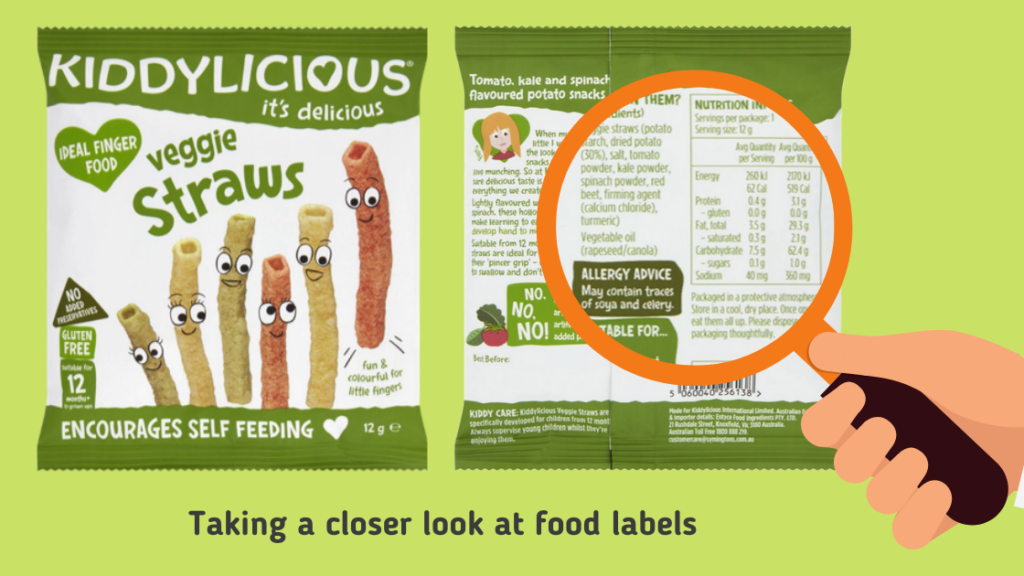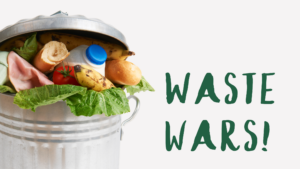Our newest blog comes from dietitian and Parents’ Voice ally, Savina Rego. Her interest area is in comparing and contrasting healthy and unhealthy food options, and sometimes the results can be extremely shocking. Make sure to continue reading to see just how shocking they can be.
How often do you check the nutrition information panel or ingredients list on packaged snacks?
If a packaged snack is marketed as a healthy option do you automatically trust the label and the kid friendly imagery on the front? What if I told you that things aren’t always as they seem?
In today’s blog post we are going to look at why it is important to check the nutrition information panel and ingredients list for packaged foods, especially if they are a regular addition to your shopping trolley.
To do that we will be comparing two products.
Compare the pair – Kiddylicious’ Veggie Straws vs Red Rock Deli’s Potato Chips
At first glance it would be easy to assume that Kiddylicious’ Veggie Straws are the healthier option to give to kids, especially as they are market that way. However, things aren’t always as they seem. Let’s compare the two, side by side…
As you can see, surprisingly Red Rock Deli outperforms Kiddylicious’ Veggie Straws on every category except for sodium. Let’s take a closer look at the Veggie Straws’ labels to see what their really made.
Kiddylicious’ Veggie Straws
The ingredients list
It is important to look at the ingredient lists to learn what has been put into your food and how much. Ingredients are always listed in order from the biggest amount to the smallest. Which means that if ‘fat’ or ‘sugar’ (or one of their alternatives) is listed at the top of the ingredient list, then it’s probably high in that ingredient.
Looking at the Veggie Straws’ ingredients list
- The 1st ingredient that is listed is ‘veggie straws’ which technically isn’t an ingredient but a group of ingredients. However, if they weren’t grouped together, the first or second ingredient would most likely be Vegetable oil (which is another commonly used name for fat). Meaning that this product is actually pretty high in fat.
- The main ingredient listed within the ‘veggie straws’ grouping is actually potato starch, which is a highly refined starch that provides very little to no fibre in comparison to an actual potato.
The nutrition information panel
It’s important to look at the nutrition information panel (NIP) to find out exactly what nutrients a product provides. When reading a nutrition information panel, it can be helpful to focus on the ‘Avg Quantity per 100g’ column. The key things to look for in that column are the amounts of total fats, saturated fats, sugars and sodium/salt. For a super helpful guide, click here.
Looking at the Veggie Straws’ nutrition information panel
- Whilst the saturated fat content might be within healthy guidelines (<3g/100g) the total fat content (and saturated fat content) is higher than Red Rock Deli’s potato chips.
- Sodium content is within healthy guidelines (360 mg/100g) but like all ultra-processed foods it does provide a significant amount per 12g serve
Front of package marketing
Front of package marketing can be extremely deceptive, especially when they use kid and parent friendly imagery. It’s good to remember that the quickest and most reliable way to know if a product is right for you and your family is by reading the labels on the back.
Examining the Veggie Straws’ front of package marketing
- By calling them ‘veggie’ straws they legally do not have to disclose how much of each vegetable (tomato, kale and spinach) is in the product. Instead they can just disclose that 30% comes from potato powder. Which means that they can market them as being healthier than they are.
- The packet of Veggie Straws are clearly marketed to parents and kids as a healthy snack alternative, however when comparing it to Red Rock Deli’s potato chips you can see that it is not necessarily the healthiest or most cost-effective option. At $150 per kg, Veggie Straws are essentially a very expensive bag of puffed air, powdered potato and vegetable oil!
As you can see, expectations for food do not always align with reality, and the marketing of a product can be very misleading. I encourage everyone to check the labels of packaged products and compare products where possible, so that you can confidently choose what serves your family best!
If you liked this blog, then we encourage you to go and follow Savina over on Instagram, her handle is @thesavvydietitian. On her Instagram she compares a lot of different types of food and gives great nutritional advice, perfect for any parents looking to expand their food awareness.







